Customer engagement analytics: From data to action
Published on August 29, 2025/Last edited on September 09, 2025/10 min read
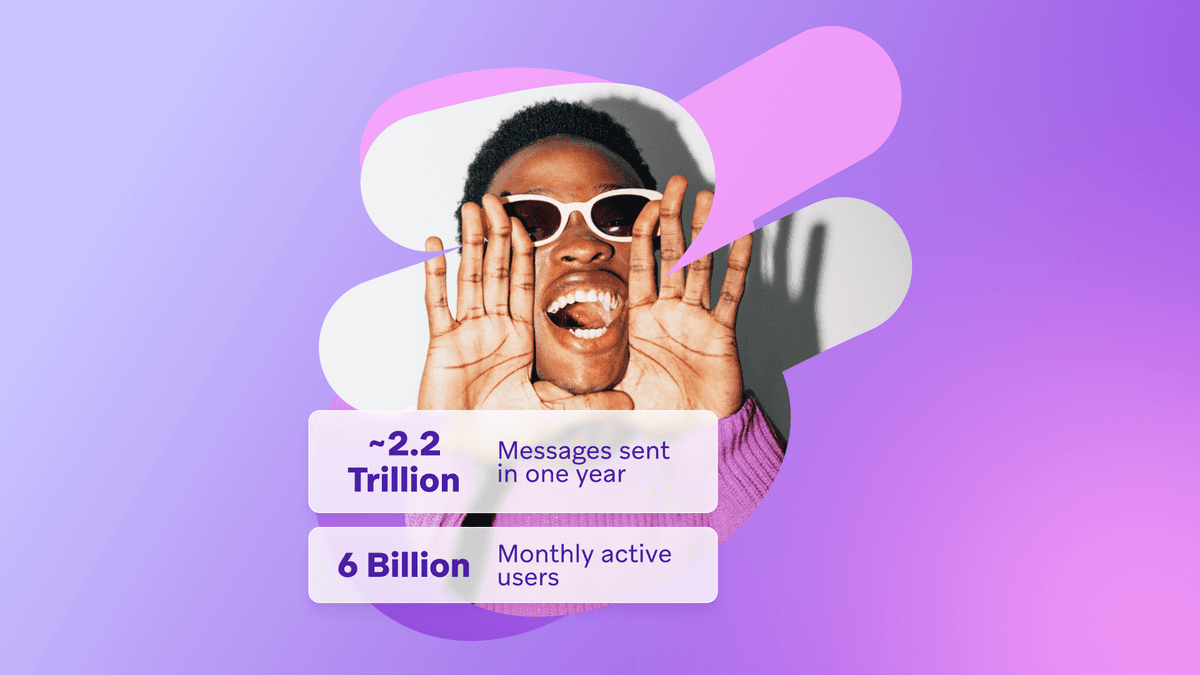
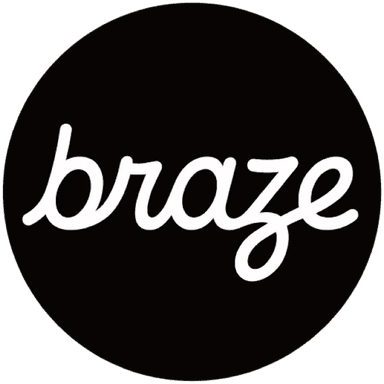
Team Braze
BrazeEach interaction tells a story. The challenge is knowing how to read it.
Customer engagement analytics gives teams a clearer view of how people behave across channels and moments. It’s a practice that helps improve experiences, increase retention, and make faster, more informed decisions.
In this guide, we’ll look at the metrics that matter, how to collect and act on engagement data, and what it takes to move from insight to impact.
Contents:
- What is customer engagement analytics?
- Customer engagement vs. service analytics
- Why customer engagement analytics matters for modern CX
- Four benefits of customer engagement analytics
- Customer engagement metrics that matter
- Digital engagement analytics across channels
- Using analytics for real-time customer engagement
- How to collect and activate engagement data
- Centralize and act with Braze
- Getting started with customer engagement analytics
- Final thoughts
- FAQs about customer engagement analytics
Let’s break it down.
What is customer engagement analytics?
Customer engagement analytics puts customers front and center of your strategy by measuring how people interact with your brand across digital channels, then using that insight to improve the experience.
These analytics can track mobile app usage and website clicks to email opens, push notification responses, feature adoption, and time spent in-product. Customer engagement analytics help connect the dots between experience and outcome, measuring the customer journey touchpoints that drive value.
By pulling together this behavioral data, brands can better understand what keeps people coming back, and what puts them off.

Customer engagement vs. service analytics
Customer service analytics looks at how well your support team is doing. It measures things like ticket volume, resolution time, customer satisfaction score after a help request (CSAT), and common issues raised. It’s reactive, focused on problems that already exist.
Customer engagement analytics, on the other hand, track how people use your product or interact with your brand. You’re looking at behaviors—feature usage, session frequency, campaign interactions, and drop-off points in the journey. These signals help you spot friction, identify opportunities, and make changes that prevent issues before they happen.
Why customer engagement analytics matters for modern CX
The experience your customer has is often only as strong as your understanding of them. Engagement analytics can give teams a real-time view of how customers move, explore, and come back for more, offering a richer, more honest picture of engagement than surveys and reactive data alone.

Using analytics to improve customer engagement helps teams spot what’s working, personalize faster, and address friction before it affects retention. By focusing on behavioral patterns—not just outcomes—you can make smarter decisions that shape better journeys from the start.
Customer engagement analytics supports a more data-driven strategy, helping teams shape relevant experiences at every stage, from first touch to long-term retention.
Four benefits of customer engagement analytics
Data-backed decisions
Focus on what’s actually working. Engagement analytics reveals which moments drive value—and where attention is being lost—so you can prioritize with confidence.
Smarter personalization
Understand individual behaviors and preferences, then tailor messages, offers, and experiences in real time. Go a step further and use dynamic personalization tools that evolve with your customers.
Proactive problem-solving
Spot signs of drop-off or friction early. Use trends and behavioral clues to fix issues before they escalate.
Stronger retention and loyalty
As customer needs shift, you can stay in step, responding with relevant moments that build loyalty over time.
Customer engagement metrics that matter
Not all metrics carry equal weight. The best customer engagement analytics programs focus on the customer engagement metrics that reflect both how engaged someone is, and how likely they are to stay.
Here are some of the key customer engagement metrics to track, from headline indicators to supporting stats that offer added context.
Customer Effort Score (CES)
Measures how easy it is for someone to complete a task—like finding an answer, signing up, or making a purchase. Lower effort = higher satisfaction and stickiness.
Customer Satisfaction Score (CSAT)
Captures how happy customers are with a specific interaction or experience. Usually gathered via quick post-interaction surveys.
Net Promoter Score (NPS)
Reflects long-term brand sentiment. Ask how likely someone is to recommend your product to others, on a 0–10 scale.
Customer Lifetime Value (CLV)
Estimates how much revenue a customer is expected to generate over the course of their relationship with your brand.
Conversion rate
Tracks how many users take a desired action, like signing up, subscribing, or upgrading.
Feature adoption
Shows which features are being used regularly, and which ones are being ignored.
Session frequency and duration
Measures how often users return and how long they stay engaged.
Churn rate
Indicates how many customers stop using your product or cancel their subscription within a given period.
Engagement recency
Look at how recently a customer has interacted with your app, site, or messages, helping you identify inactive users before they lapse.
Digital engagement analytics across channels
Engagement happens across lots of touchpoints. Your customers are browsing, tapping, scrolling, and interacting across websites, apps, email, push notifications, and more—often in the same day. That’s why digital engagement analytics needs to look beyond single-channel performance and bring everything together.
Siloed metrics only show part of the picture. Unified digital engagement analytics reveals how behavior moves across touchpoints—and how each channel shapes the overall journey.
This means looking at:
- Web analytics: Page visits, session depth, CTAs clicked, bounce rates
- App analytics: Feature usage, screen flows, session duration
- Messaging engagement: Opens, clicks, dismissals, time of interaction across email, push, in-app, and SMS, conversion rate, opt-in rates
- Cross-channel patterns: How engagement on one channel drives (or drops off) on another
Using analytics for real-time customer engagement
Timing matters. When teams can interpret behavior as it unfolds, they can adjust journeys in the moment, send messages when they’ll have the most impact, and stay relevant across touchpoints.
Analytics makes it possible to respond in the moment—and here’s how to turn that into action.
Real-time customer engagement
When a customer interacts with your brand, they’re telling you something—what they want, what they’re struggling with, or what keeps them coming back. Real-time customer engagement analytics lets you respond in the moment, with timely nudges like:
- A push notification when someone abandons a product page
- A help tooltip when users stall during onboarding
- A personalized discount for loyal customers hitting a milestone
These moments build trust and keep the journey moving.
Trend spotting and journey optimization
Beyond individual interactions, analytics helps you understand broader behavioral patterns. Are users skipping a feature after sign-up? Is engagement dropping at the same point in your onboarding flow? Spotting trends like these helps you improve the customer journey at scale.
- Use A/B and multivariate tests to experiment with messaging flows, creative, segmentation, and more
- Track behavior over time to identify where engagement fades
- Monitor drop-off points and create targeted campaigns to re-engage
Smart segmentation
Segmentation should be dynamic and update as customers do. Instead of relying on static lists, teams can create audience groups based on live behaviors—so messages are shaped by what a user is doing and who they are right now.
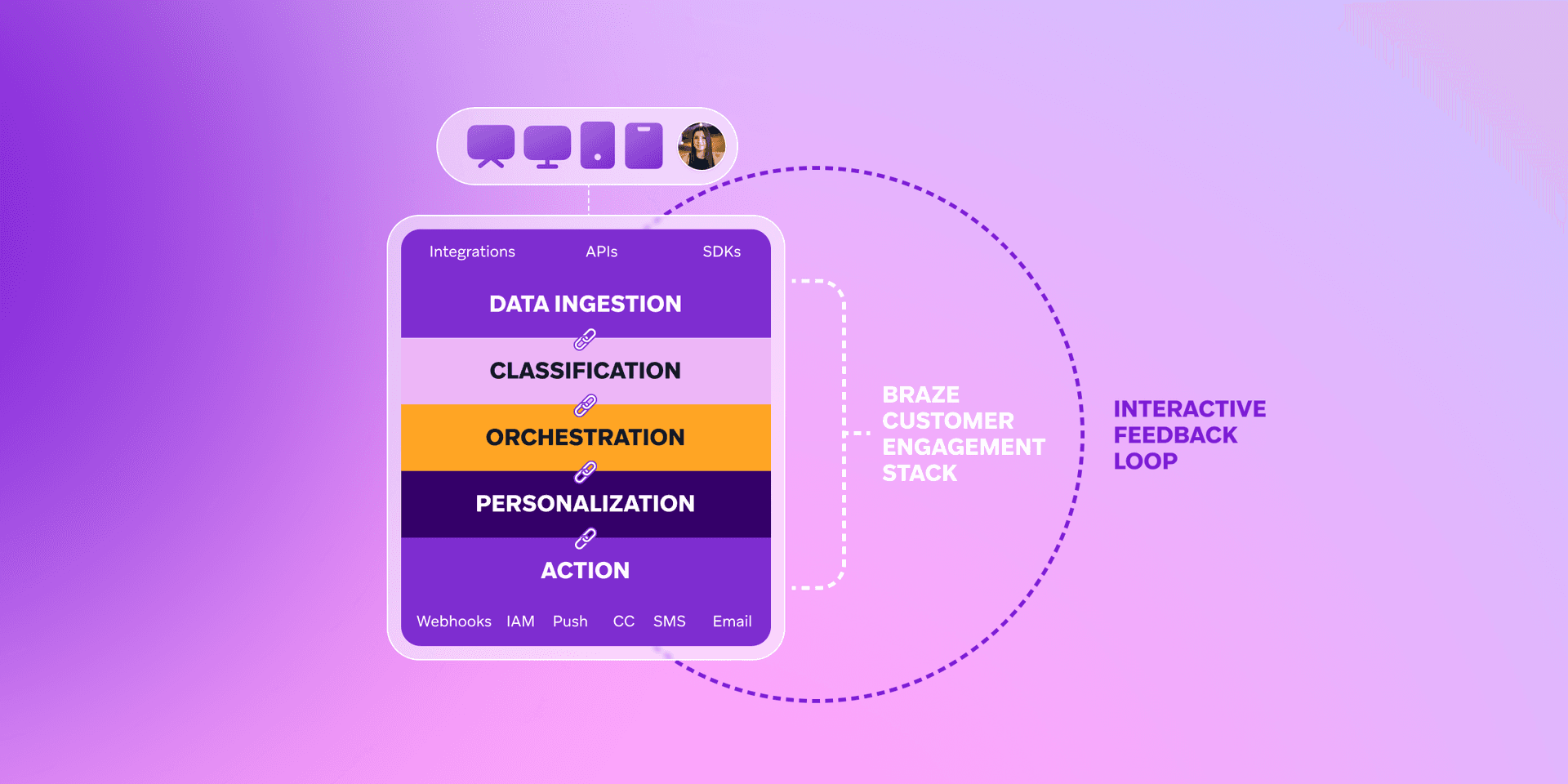
Turning insight into action
Insight is only useful if you can act on it. With the right setup, teams can trigger campaigns automatically based on behavior—no exporting, no delay.
- Launch targeted campaigns that evolve behavior shifts
- Create journeys that dynamically adjust journeys as customers interact with them
- Close the loop between engagement data and message delivery with tools based on streaming data
How to collect and activate engagement data
Good decisions start with good data. To get a full picture of how your customers engage, you need to gather insight from multiple sources, then activate it in ways that move the experience forward.
Here’s how to do both.
Where to collect customer engagement data
- In-product behaviorTrack clicks, taps, feature use, navigation paths, and time spent inside your app or platform.
- Surveys and feedback toolsUse CSAT, NPS, CES, and qualitative feedback to understand sentiment and spot common friction points.
- Messaging and campaign analyticsMonitor performance across email, push, SMS, and in-app messages—opens, clicks, engagement timing, and more.
- CRM and third-party integrationsPull in data from support tools and external systems to enrich your view of each customer.
Together, these sources offer a clearer view of behavior—and the context behind it.
Centralize and act with Braze
Collecting data is only half the story. To make it usable, teams need a way to bring it together and act on it in real time.
With Braze, you can centralize customer engagement data across channels, visualize trends through custom dashboards, and dive into performance with tools like Report Builder. Whether you’re mapping out an onboarding flow or rolling out a winback campaign, Braze gives you the insight and flexibility to optimize faster, without leaving the platform. It’s built for real-time customer engagement at scale.

Getting started with customer engagement analytics
You don’t need a complex setup to start using customer engagement analytics effectively. The most important step is beginning with curiosity: Where are people engaging? Where are they dropping off? What could be done differently?
From there, build up with:
Clear goals: Decide what you want to improve—onboarding, retention, campaign performance—and choose the customer engagement metrics that reflect that.
The right data sources: Combine behavioral, sentiment, and campaign data to create a fuller picture of the customer journey.
Accessible tools: Use platforms that make it easy to visualize trends, test hypotheses, and act on insights without needing a separate analytics team.
A habit of iteration: Don’t wait for perfection. Start simple, stay curious, and keep shaping your strategy as the data comes in.
Final thoughts on customer engagement analytics
Customer engagement analytics gives teams the clarity to act with confidence. When you understand how people interact with your brand in real time, it becomes easier to make smarter decisions, improve journeys, and deliver more relevant experiences.
Start where you are. Keep asking the right questions. And let the data guide what comes next.
FAQs about customer engagement analytics
What are customer engagement analytics?
Customer engagement analytics refers to the process of measuring, analyzing, and interpreting data related to how customers interact with a brand across various touchpoints and channels. This type of analytics helps businesses understand the effectiveness of their engagement strategies and identify areas for improvement. By leveraging customer engagement analytics, brands can better understand behavior, measure success, and improve customer experiences in real time.
What is the difference between customer engagement and customer service analytics?
Customer engagement analytics focuses on proactive behavior—like how users explore your product or interact with messages—while customer service analytics tracks reactive support activity, such as tickets, resolution times, and satisfaction after help is requested.
What are the key customer engagement metrics?
Core metrics include Customer Effort Score (CES), Net Promoter Score (NPS), Customer Satisfaction (CSAT), and Customer Lifetime Value (CLV). Supporting metrics include conversion rates, session frequency, churn rate, and feature adoption.
Related Tags
Be Absolutely Engaging.™
Sign up for regular updates from Braze.
Related Content
View the Blog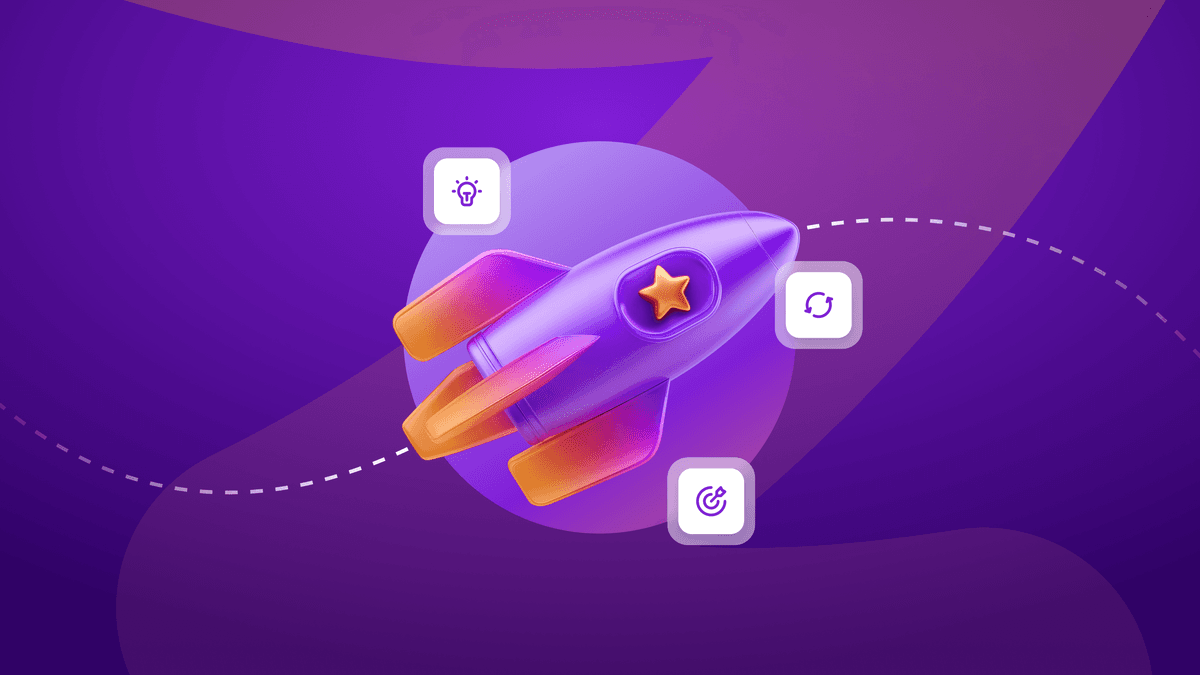
Adapting to change: How startups can stay agile in a rapidly evolving market

Team Braze

Digital body language: The startup growth multiplier

Team Braze
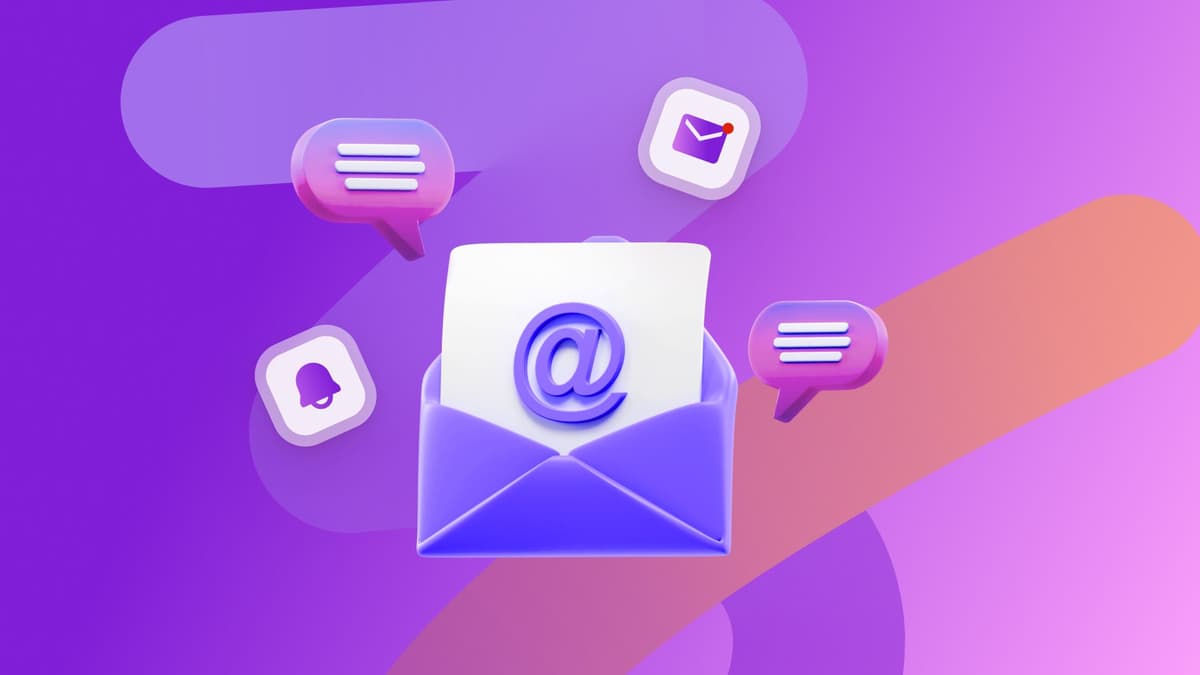
Understanding email open rates and how to improve them
